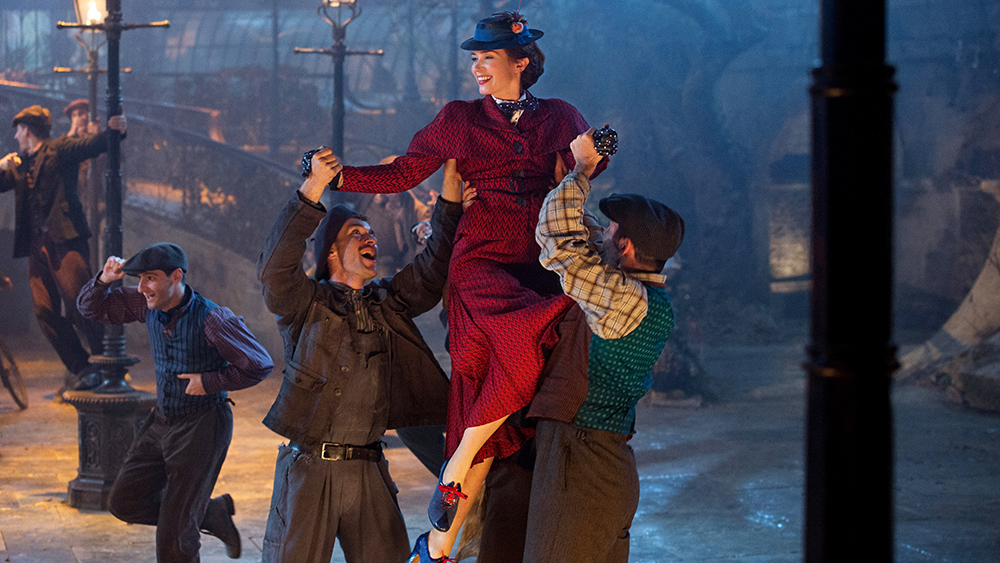
1964’s Mary Poppins is arguably the magnum opus of Walt Disney. Released two years before his passing, it seamlessly combined all of the techniques and skills he had learned as a producer. Animation, live-action and heart-warming stories. All the while featuring incredible music, performances and direction. It’s arguable that a sequel, especially one decades after, seems foolish. But Rob Marshall took great care as a director. For while his film is certainly familiar, it still brings a lot of charm and sweetness. This is thanks to great musical numbers and an absolutely incredible performance from Emily Blunt as the titular nanny.
Much like the first Poppins, much of the film’s success comes from its leading actress. Blunt retains the spirit of Julie Andrews, but still makes the character her own. She’s stern and at times vain, but is willing to let her guard down. She’s passive, but commanding. Every moment she’s on screen, the film is absolutely glorious.
Lin-Manuel Miranda as Jack, the replacement to Dick van Dyke’s Bert from the previous film, is also delightful. He has such a joyous smile and charm to his performance that’s almost infectious. His interactions with Mary are delightful, with their duet in the famous animated sequence being a real highlight.
Speaking of which, the musical sequences are truly something special. While Rob Marshall’s non-musical scenes are nice, the musical numbers are fantastic. Lively, energetic and charming all at once. Marshall’s musicals typically shine with the numbers, and this is no exception.
The aforementioned animated duet is great, as well as “Turning Turtle,” performed by Meryl Streep in a brief cameo. But the real stand-out is “Trip A Little Light Fantastic.” Depicting Jack and his lamp-lighters, the sequence features incredible choreography, and an absolutely illustrious score. It’s worth watching for that scene alone.
But while the musical numbers have great choreography and score, the lyrics leave something to be desired. Marc Shaiman and Scott Whitman try, but their work fails to be catchy or memorable. It’s unlikely any of them will get stuck in their head. It’s disappointing, considering the iconic songs of the first Mary Poppins.
The film’s story also doesn’t quite seem as strong as the last one. Not only is having Colin Firth play an antagonist seem out of left field, the themes don’t stand as tall. The first Poppins talked about the importance of family and childhood. It connected itself to Mr. Banks and his own plight. Here, there’s an attempt, but Michael’s story, played by Ben Whishaw, doesn’t really feel as tight. It’s there, considering he is grieving over the loss of his wife. But his main goal, in trying to find shares his father left to pay a loan he made towards the bank, has a very loose connection. Even with the strong emotional pathos delivered by Whishaw, it feels somewhat empty.
But the elements that work are fantastic. For better or for worse, Mary Poppins Returns has all of Rob Marshall’s strengths. He excels in directing actors and in musical sequences. And through these moments, the film truly shines. It’s debatable if it stands as tall as the 1964 classic. But it’s still a joyous film, and one that is sure to please even the sharpest cynic.